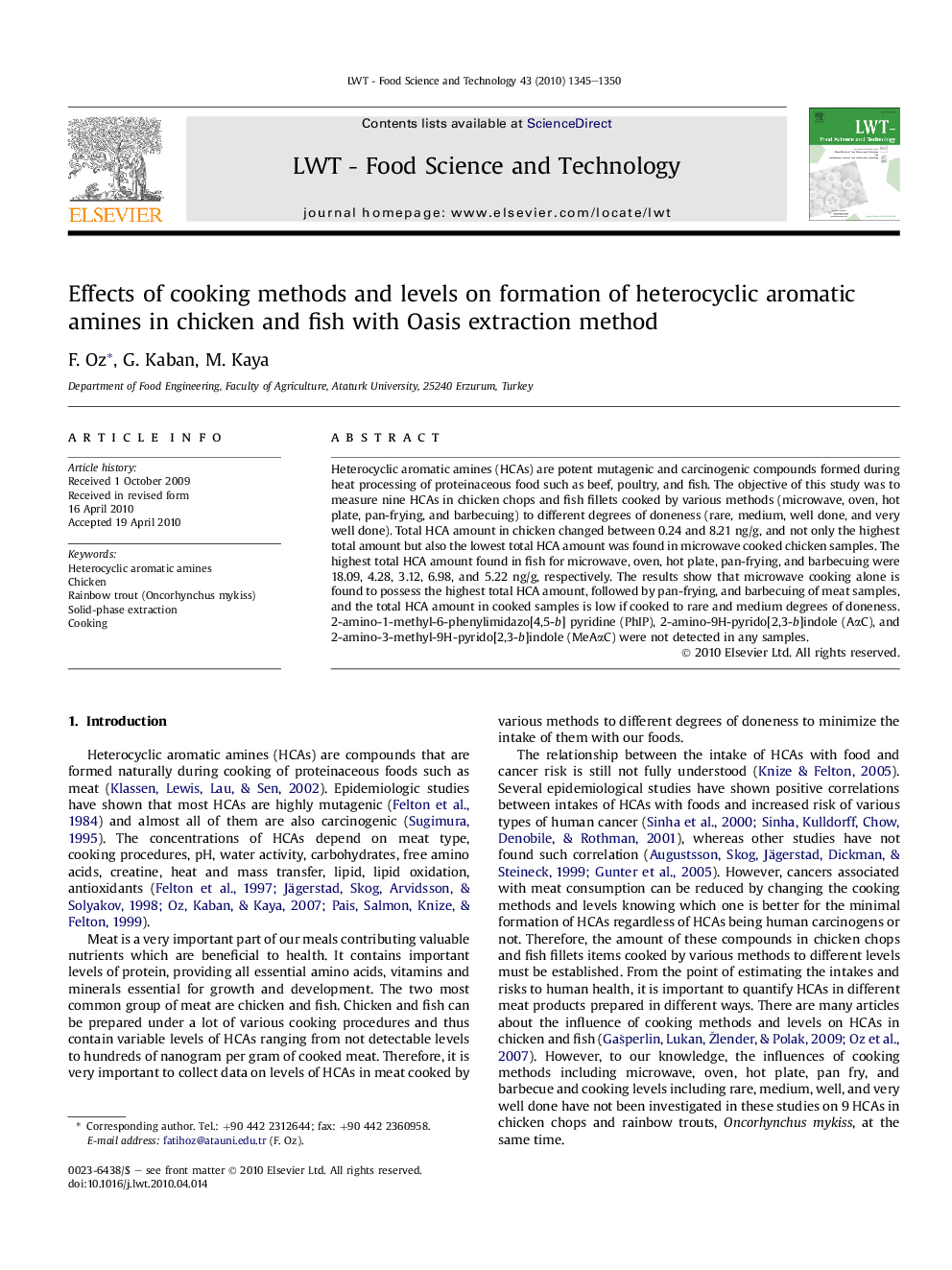| کد مقاله | کد نشریه | سال انتشار | مقاله انگلیسی | نسخه تمام متن |
|---|---|---|---|---|
| 4564161 | 1330928 | 2010 | 6 صفحه PDF | دانلود رایگان |

Heterocyclic aromatic amines (HCAs) are potent mutagenic and carcinogenic compounds formed during heat processing of proteinaceous food such as beef, poultry, and fish. The objective of this study was to measure nine HCAs in chicken chops and fish fillets cooked by various methods (microwave, oven, hot plate, pan-frying, and barbecuing) to different degrees of doneness (rare, medium, well done, and very well done). Total HCA amount in chicken changed between 0.24 and 8.21 ng/g, and not only the highest total amount but also the lowest total HCA amount was found in microwave cooked chicken samples. The highest total HCA amount found in fish for microwave, oven, hot plate, pan-frying, and barbecuing were 18.09, 4.28, 3.12, 6.98, and 5.22 ng/g, respectively. The results show that microwave cooking alone is found to possess the highest total HCA amount, followed by pan-frying, and barbecuing of meat samples, and the total HCA amount in cooked samples is low if cooked to rare and medium degrees of doneness. 2-amino-1-methyl-6-phenylimidazo[4,5-b] pyridine (PhIP), 2-amino-9H-pyrido[2,3-b]indole (AαC), and 2-amino-3-methyl-9H-pyrido[2,3-b]indole (MeAαC) were not detected in any samples.
Journal: LWT - Food Science and Technology - Volume 43, Issue 9, November 2010, Pages 1345–1350